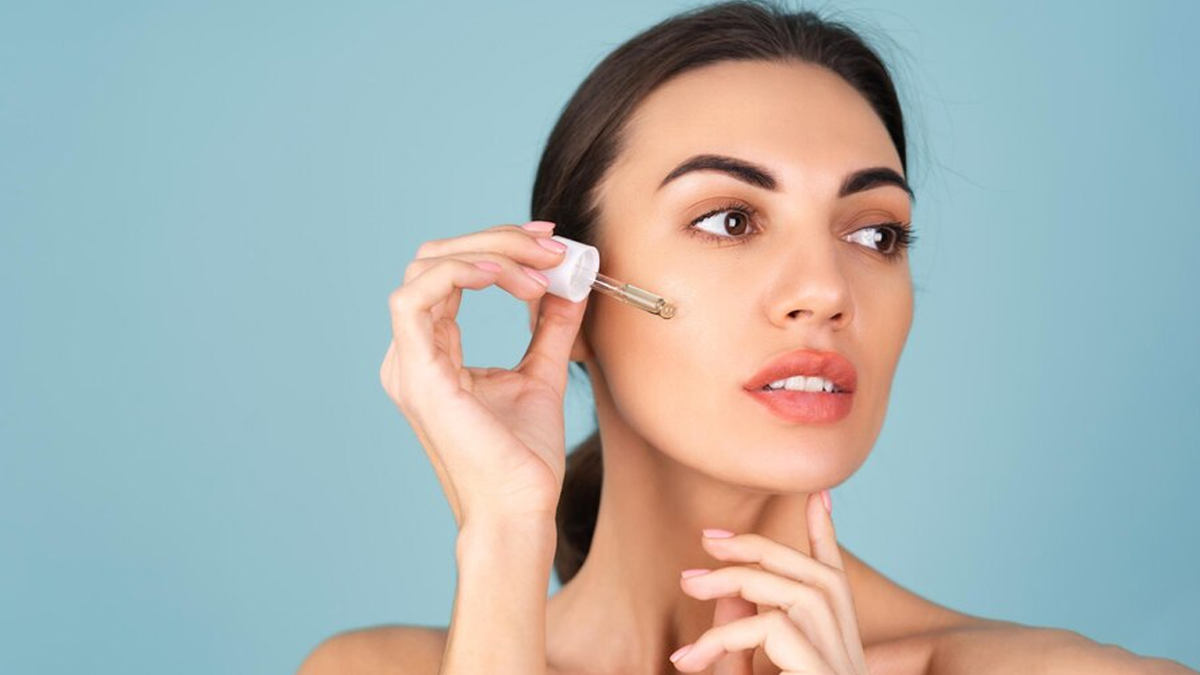
There’s a lot of buzz around hyaluronic acid in the skincare industry and experts have been encouraging its use for enhancing skincare. From influencers to actors, everybody’s promoting products that contain hyaluronic acid for better skin. But what is all this hype about?
Table of Content:-
To understand the benefits of hyaluronic acid for skin and how to use it, OnlyMyHealth interacted with Dr Kiran Hebbalkar, Dermatologist and Cosmetologist.
Dr Hebbalkar said, “Hyaluronic acid, a naturally occurring substance in the skin, is celebrated for its exceptional ability to retain moisture. This makes it a key ingredient in the skincare industry. Integrating hyaluronic acid into your daily regimen can lead to hydrated, plump, and youthful-looking skin.”
Understanding Hyaluronic Acid

According to studies, hyaluronic acid is a glycosaminoglycan, a vital natural substance that's a major component of connective tissues. Dr Hebbalkar said, “Its primary function is to retain water to keep tissues well-lubricated and moist. In skincare, it’s revered for its ability to hold up to 1,000 times its weight in water, making it an excellent hydrator.”
Also read: Hyaluronic Acid: Importance, How To Apply & More
Choosing the Right Product
Hyaluronic acid is available in various forms, including serums, creams, and even supplements. Dr Hebbalkar explained, “Serums are typically more concentrated and penetrate deeper into the skin, ideal for those seeking intensive hydration. Moisturisers combine hyaluronic acid with other ingredients to provide both surface-level and deeper hydration. For an occasional hydration boost, sheet masks infused with hyaluronic acid can be a relaxing treat.”
Steps to Incorporate Hyaluronic Acid

Here are some steps explained by Dr Hebbalkar to incorporate hyaluronic acid in your skin care routine.
Start with a gentle cleanser to remove impurities from your face. This ensures your skin can absorb the hyaluronic acid more effectively. Follow with a toner to balance your skin's pH levels and prepare your skin for better absorption of subsequent products.
Next, apply a few drops of hyaluronic acid serum to your face. Gently pat it in rather than rubbing to ensure it penetrates the skin. For best results, apply the serum to slightly damp skin, which can enhance its ability to draw in moisture.
After the serum, lock it in with a good moisturiser. This step is crucial as it helps to seal the hyaluronic acid in, preventing it from evaporating and ensuring your skin stays hydrated throughout the day. Finish your morning routine with a broad-spectrum sunscreen to protect your skin from harmful UV rays, which can degrade hyaluronic acid and damage your skin.
Also read: Niacinamide To Hyaluronic Acid, Common Skin Care Ingredients And Their Benefits

Tips for Maximising Benefits
Staying hydrated is essential. Drink plenty of water throughout the day, as hyaluronic acid works by drawing moisture into the skin. Advising, Dr Hebbalkar said, “For extremely dry skin, layering products that contain hyaluronic acid can be beneficial. Start with a serum, follow with a moisturiser, and finish with a hydrating mist. Consistency is key, so make hyaluronic acid a staple in your skincare routine for lasting results.”
Hyaluronic acid is generally safe for all skin types, but it’s important to do a patch test before fully integrating it into your routine. Apply a small amount of the product to your inner wrist or behind your ear and wait 24 hours to see if any irritation occurs.
It's essential to consult with a qualified dermatologist or aesthetician to determine the most suitable treatments for you. Moreover, maintenance sessions may be necessary to sustain the benefits over time.
Also watch this video
How we keep this article up to date:
We work with experts and keep a close eye on the latest in health and wellness. Whenever there is a new research or helpful information, we update our articles with accurate and useful advice.
Current Version